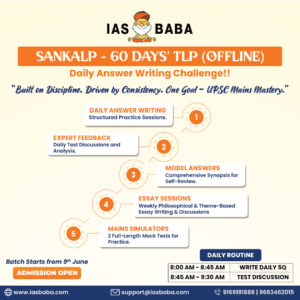IASbaba's Daily Current Affairs Analysis
Archives
(PRELIMS & MAINS Focus)
Syllabus:
- Prelims & Mains – HISTORY
Context: International Women’s Day (IWD) is celebrated globally on March 8 each year to recognize women’s achievements, promote gender equality, and advocate for women’s rights.
Background: –
- The occasion offers an opportunity to recall the struggle of female revolutionaries for the cause of women’s education in India.
Pre Independence Women Activists
- In the pre-independent times, several female revolutionaries struggled hard for the cause of women’s education, including Savitribai Phule, Fatima Sheikh, Pandita Ramabai, Chandraprabha Saikiani, Begum Rokeya Sakhawat Hossain, Sarala Ray, Anasuya Sarabhai, and Abala Bose.
Savitribai Phule
- Savitribai Phule was a Dalit woman who challenged the upper caste hegemony of education.
- She opened India’s first school for girls in Vishrambag Wada, Pune, Maharashtra in 1848 along with her husband Jyotirao Phule. Her school was open to all castes.
- Savitribai Phule not only promoted education for girls but also stood in opposition to existing social evils like untouchability and prohibition on widow remarriage.
Fatima Sheikh and Pandita Ramabai
- Another notable figure, Fatima Sheikh, widely celebrated as India’s first Muslim woman educator, was an associate of Jyotirao and Savitribai Phule in Pune. Unfortunately, not a lot is known about her.
- Pandita Ramabai, from Mangalore (then Madras presidency but now part of Karnataka), challenged the caste system by marrying a man from the lower caste.
- She was also a staunch advocate for women’s education and actively spoke out against the plight of widows, especially child widows, and child marriage.
- Ramabai founded the Arya Mahila Samaj in 1882 to promote women’s education, which was seen as instrumental in eradicating child marriage.
Chandraprabha Saikiani
- Chandraprabha Saikiani was a social reformer and active proponent of women’s education from Assam.
- Saikiani demonstrated her commitment to the cause by starting a school for girls at the young age of 13, where she imparted whatever knowledge she had to other girls.
- Her activism extended beyond education. At a large public gathering, she called for a ban on opium – an unusual act for a woman in that era when women speaking in public gatherings was unconventional.
- In 1926, Saikiani founded the Assam Pradeshik Mahila Samiti and dedicatedly worked for women’s education.
Begum Rokeya Sakhawat Hossain and Sarala Ray
- Begum Rokeya, born in Pairaband, Rangpur, Bengal (part of Bangladesh now), advocated for Muslim women’s education through her visionary women-centric writings.
- Her most famous short story, Sultana’s Dream, imagines a gender-reversed society where women run the world and men are confined indoors. Having never been allowed to earn a formal education, she started schools for Muslim girls in Bhagalpur (1909) and Kolkata (1911).
- Sarala Ray, an educator from Bengal, founded the Gokhale Memorial Girls’ School in 1920 in Kolkata, where all girls were encouraged to learn three languages – Hindi, Bengali and English – as part of the school’s innovative curriculum.
- Later, she extended her efforts towards women’s higher education and established the Gokhale Memorial Girls’ College in 1938.
Source: Indian Express
Syllabus:
- Prelims – CURRENT EVENT
Context: Union Minister for Environment, Forest, and Climate Change, Bhupender Yadav, inaugurated the World Sustainable Development Summit (WSDS) 2025 in New Delhi on Wednesday.
Background: –
- Union Minister stressed that under the leadership of Prime Minister Modi, India has taken transformative steps with initiatives like the International Solar Alliance (ISA), the Coalition for Disaster Resilient Infrastructure (CDRI), and Mission Lifestyle for Environment (LiFE).
Key takeaways
- The World Sustainable Development Summit (WSDS) is an annual event organized by The Energy and Resources Institute (TERI), serving as a global platform to discuss and advance sustainable development and climate solutions.
- Established in 2001 as the Delhi Sustainable Development Summit (DSDS), it was rebranded to WSDS to reflect its broader international scope.
- WSDS 2025 Theme: ‘Partnerships for Accelerating Sustainable Development and Climate Solutions’
- This 24th edition emphasizes the critical role of collaborations among governments, businesses, civil society, and other stakeholders in driving meaningful progress toward sustainability goals.
Key Components of WSDS:
- Sustainable Development Leadership Award (SDLA): Since 2005, this award has honored global leaders for their contributions to sustainable development.
- Ministerial and High-Level Sessions: Panels featuring policymakers, business leaders, and academics discussing pressing environmental issues.
- Thematic Tracks: Focused discussions on specific sustainability challenges, engaging domain experts to propose actionable solutions.
- CEO Forum: A platform for industry leaders to brainstorm sustainable business practices.
- Youth Connect: Initiatives to engage young students in sustainability dialogues, fostering awareness and involvement.
Source: DD News
Syllabus:
- Prelims & Mains – CURRENT EVENT
Context: Lithuania quit an international convention banning cluster bombs, citing security concerns over neighbouring Russia in a move that has drawn criticism from human rights groups.
Background:
- NATO member Lithuania has said it wants to strengthen its defences following Russia’s invasion of Ukraine, fearing it could be next if Moscow succeeds.
Key takeaways
- The Convention on Cluster Munitions (CCM) is an international treaty that prohibits the use, production, transfer, and stockpiling of cluster bombs, which pose severe risks to civilians.
Key Features of the Convention
- Adoption: 30 May 2008 in Dublin, Ireland.
- Entry into Force: 1 August 2010 (after 30 countries ratified it).
- Signatories: 123 countries (as of 2023), but major powers like the USA, Russia, China, and India have not signed.
- Main Provisions:
- Total Ban on cluster munitions.
- Stockpile Destruction within 8 years.
- Clearance of Affected Areas within 10 years.
- Assistance to Victims (healthcare, rehabilitation, and reintegration).
Why Cluster Munitions are Controversial?
- Wide Area Effect: Cluster bombs release multiple submunitions over large areas, causing indiscriminate damage.
- Failure Rate: Unexploded bomblets become de facto landmines, harming civilians for decades.
- Humanitarian Crisis: Countries like Laos, Vietnam, Syria, and Ukraine suffer from past cluster munition use.
India’s Stand on CCM
- Not a Signatory: India has not signed or ratified the CCM.
- Reasons for Non-Signature:
- Believes in the legitimate defense use of cluster munitions.
- Calls for a balance between security and humanitarian concerns.
- Reluctant to accept legally binding disarmament treaties without universal participation (as major powers like the USA and Russia are not part of it).
Source: The Hindu
Syllabus:
- Mains – GEOGRAPHY
Context: The Jammu and Kashmir government announced a new set of rules for Bangus, a far-off tourist spot near the Line of Control (LoC) in north Kashmir, in a bid to promote it as an ecotourism destination.
Background: –
- The decision comes in the wake of unplanned and uncontrolled growth in concrete structures in the traditional tourist hotspots of Pahalgam, Gulmarg and Sonamarg in Kashmir.
Key takeaways
- Bangus Valley, also known as Bungus Valley, is a pristine and lesser-known destination located in the Kupwara district of Jammu and Kashmir, India.
- The name “Bangus” is derived from the Sanskrit words “Van” (forest) and “Gus” (grass), reflecting the valley’s lush grassy landscapes.
- Situated approximately 100 kilometers northwest of Srinagar, the valley rests at an elevation of about 10,000 feet above sea level within the Pir Panjal mountain range.
- The valley is divided into two main sections:
- Bodh Bangus (Big Bangus): The main valley, locally known as Bodh Bangus, covers an estimated area of about 300 square kilometers. It consists of a linear elliptical bowl aligned along the east-west axis.
- Lokut Bangus (Small Bangus): A smaller valley known as Lokut Bangus lies on the northeastern side of the main valley.
- Both valleys feature level green meadows surrounded by low-lying mountains covered with dense coniferous forests.
- The valley is encircled by the Rajwar and Mawar regions to the east, the Shamasbury and Dajlungun Mountains to the west, and the Chowkibal and Karnah Guli areas to the north.
Source: The Hindu
Syllabus:
- Prelims & Mains – CURRENT EVENT
Context: In a setback to global climate justice efforts, the United States has withdrawn from loss and damage fund aimed at compensating developing countries for the damages caused by climate change.
Background: –
- As the largest historical emitter, the United States bears a significant share of the blame for the climate adversities affecting vulnerable populations worldwide.
Key takeaways
- The Loss and Damage Fund is a critical financial mechanism established to address the adverse impacts of climate change, particularly in vulnerable and developing countries.
- The concept of “Loss and Damage” was first introduced in the 1991 United Nations Framework Convention on Climate Change (UNFCCC) negotiations by island nations fearing existential threats due to climate change.
- It gained prominence under the Paris Agreement (2015), which recognized the need to address loss and damage separately from mitigation and adaptation.
- It was formally established at the COP27 (27th Conference of the Parties) held in Sharm El-Sheikh, Egypt, in November 2022.
- At COP28, the decision to operationalize the LDF was adopted by consensus, with several countries pledging significant amounts to the fund. For example, the United Arab Emirates committed USD 100 million, the United Kingdom committed GBP 40 million, and the European Union committed 225 million euros.
- Scope: The fund addresses both extreme weather events (e.g., hurricanes, floods) and slow-onset events (e.g., sea-level rise, desertification).
- Governance: The LDF is overseen by a Governing Board that determines how the fund’s resources are disbursed. The World Bank serves as the interim trustee, hosting the fund for four years.
- Funding: The fund encourages voluntary contributions from developed countries but also invites developing countries to contribute. Financial support is provided in the form of grants and concessional financing
Source: Times of India
Practice MCQs
Q1.) Which of the following statements regarding the Convention on Cluster Munitions (CCM) is correct?
(a) It allows the use of cluster munitions for self-defense.
(b) It mandates the destruction of stockpiles within 15 years.
(c) India, the USA, Russia, and China have not signed the treaty.
(d) It was adopted in 2001 and entered into force in 2005.
Q2.) The Loss and Damage Fund was formally established at which COP meeting?
a) COP25
b) COP26
c) COP27
d) COP28
Q3.) Which organization is responsible for organizing the World Sustainable Development Summit (WSDS)?
(a) United Nations Environment Programme (UNEP)
(b) The Energy and Resources Institute (TERI)
(c) World Economic Forum (WEF)
(d) Intergovernmental Panel on Climate Change (IPCC)
Comment the answers to the above questions in the comment section below!!
ANSWERS FOR ’ Today’s – Daily Practice MCQs’ will be updated along with tomorrow’s Daily Current Affairs
ANSWERS FOR 7th March – Daily Practice MCQs
Q.1) – c
Q.2) – b
Q.3) – a












